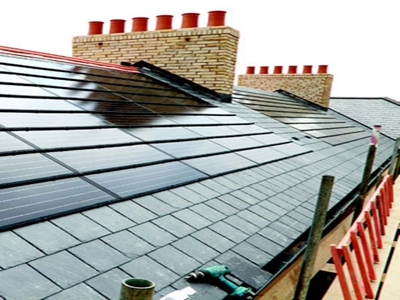
Building Integrated Photovoltaics
The world has witnessed a significant increase in energy demand in the past few decades. With a rapidly growing population and increased economic activities, the demand for energy is expected to double by 2050. To meet this surge in demand, it is important to harness renewable energy and promote sustainable practices. Building Integrated Photovoltaics (BIPV) is one such solution that enables us to generate clean and renewable energy while also reducing our carbon footprint.
What is BIPV?
Building Integrated Photovoltaics (BIPV) is an innovative technology that seamlessly integrates photovoltaic systems into building envelopes. BIPV systems combine solar panels with building materials such as glass, roofing tiles, facades, and walls, to create an aesthetically pleasing and functional energy-generating structure. Unlike conventional solar systems, BIPV systems can generate electricity from multiple surfaces of a building, thereby maximizing energy production.
BIPV technology has been around for several decades, but it has gained significant momentum in recent years due to advancements in solar technology and building materials. BIPV systems not only generate clean energy but also help reduce building maintenance costs, enhance sustainability and provide better thermal insulation.
Benefits of BIPV
BIPV systems provide several benefits over conventional solar systems. Some of these benefits include:
Aesthetically Pleasing: BIPV systems can be integrated into the building envelope, creating a seamless design that blends well with the architecture. This not only improves the aesthetic appeal of buildings but also enhances their value.
Reduces Energy Bills: BIPV systems generate electricity from the sun, which reduces a building's reliance on fossil fuels and minimizes electricity bills.
Improve Building Efficiency: BIPV systems have high-quality insulation properties that help regulate indoor temperatures, thereby reducing the need for cooling and heating systems and associated energy costs.
Sustainable Building Design: BIPV systems promote sustainable building practices that aim to reduce environmental impact, enhance energy efficiency, and promote sustainable living.
Increase Property Value: BIPV systems enhance the value of properties, making them more attractive and valuable to potential buyers.

Applications of BIPV
Rooftop Solar Panels: Rooftop solar panels are the most common type of BIPV system used in commercial and residential buildings. These systems generate electricity and provide a layer of thermal insulation to the building.
Facades: BIPV facades attach solar panels to the exterior surface of a building. This can be used in commercial buildings and skyscrapers.
Skylights: BIPV panels can be combined with traditional skylights, allowing natural light to enter the building while generating electricity.
Building Envelopes: BIPV panels can be part of a building's exterior cladding system integrated with various materials such as glass or steel.
Another critical element of the BIPV system is the photovoltaic mounting structure that supports the panels. The right solar mounting system can enhance the efficiency of the solar panels, extend their lifespan, and ensure that they remain secure and stable on the building. When selecting the ideal photovoltaic mounting system, several factors need to be considered, such as the load-bearing capacities, wind resistance, and geographic location. Furthermore, the selection of the type of mounting system (ground-mounted, roof-mounted, or facade-mounted) will depend on the size, shape, and configuration of the building and the surrounding environment.
Costs and Challenges of BIPV
The initial cost of BIPV systems is significantly higher than conventional solar systems. The cost of BIPV depends on various factors such as the building type, size, design, and location. However, BIPV systems offer long-term cost-saving benefits, making them a valuable investment.
Besides the cost factor, BIPV technology also faces several challenges. One of the significant challenges is the lack of standardization and regulations governing building codes. There is a need for global standards that govern the design, installation, and maintenance of BIPV systems.
Conclusion
BIPV technology presents numerous opportunities for sustainable and energy-efficient building design. BIPV not only provides clean and renewable energy but also offers excellent thermal insulation benefits, reduces a building's carbon footprint, and enhances its aesthetic appeal. While the costs of BIPV systems may be higher initially, the long-term benefits and cost-saving potential make it a wise investment. As policymakers become more aware of the need for sustainable practices, it is expected that BIPV technology will become more widespread and a common feature of modern building design.